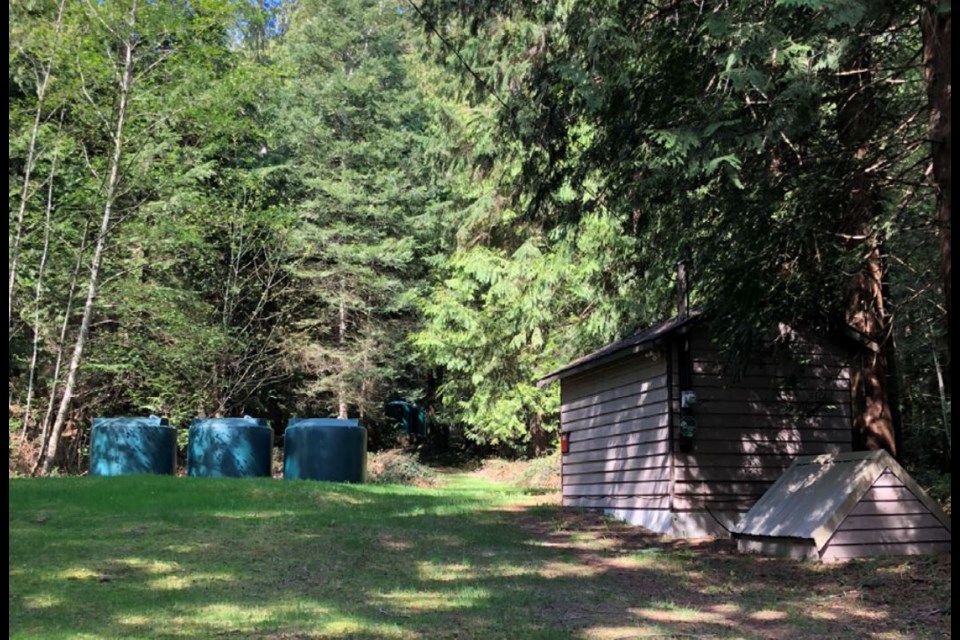Steps towards adding supply to Keats Island’s Eastbourne water system were supported at the Sunshine Coast Regional District’s Oct. 26 committee of the whole meeting. Should those receive board endorsement, pre-drilling preparations for two wells and related infrastructure would proceed next year.
“We’re seeing not a lot of water for a large cost," stated Area F (West Howe Sound) director Kate-Louise Stamford as the committee endorsed staff’s recommendation to move forward with project design, permitting and construction tender development.
To drill two production wells, and connect those to the existing water treatment plant where additional processing and storage would be needed was estimated to cost $1.5 million in reports on the meeting’s agenda from contractor ISL Engineering and staff. If completed, the project would double the water available to the 170 clients of that system during the dry months by supplying an additional 27 cubic metres per day.
Staff reported that Eastbourne’s water clients are already practicing conservation with per connection demands at about 20 per cent of the average usage of clients on other SCRD water supplies. They anticipated flows from new wells will address that system’s water supply deficit and end the regular Stage 4 restrictions that users have been subject to. The additions would also provide redundancy should one of the proposed or existing wells go out of service.
Initial raw water quality results on the test wells drilled in late 2022 showed those exceeded fluoride, total coliforms, antimony, arsenic, manganese, iron, and phosphorous in Canadian Drinking Water Quality standards. The consultant report identified a range of treatment options that could be applied. Those will be explored further in the upcoming design stage.
Concerns from directors
Area D director Kelly Backs was the sole committee vote in opposition to the recommendation to proceed to project design. He indicated a preference to see efforts focus on rainwater catchment and storage, stating that $1.5 million would buy “a lot” of storage and be “a better bang for the buck."
Stamford explained that space for water storage was a major factor at both the treatment plant and on the individual properties, with most of those smaller than a traditional municipal residential lot, making those “very limited in what can be stored on site."
She expressed concerns about saltwater intrusion into the proposed wells. ISL’s lead of hydrogeology, Soren Poschmann, who presented that firm’s findings to the committee, stated that the system’s existing drilled well has not displayed signs of that happening and that provincial mapping of the proposed well areas shows “medium to low risk” for intrusion. Staff commented that the intrusion of saltwater into aquifers is closely examined as part of the provincial water licensing process.
Area E director Donna McMahon said she was “reluctantly supportive” of recommending taking the next steps on this initiative. “We are getting all these capital projects coming to us basically on a break/fix basis…Eastbourne needs a solution now. They are running out of water. But this is coming to us ahead of our asset management plan and ahead of service level decisions." While she viewed that approach as “backwards," she said in this case, she could not see an alternate solution.
“It is not everything we would want in a water system, but I believe staff have done their due diligence… This community does deserve a water system with redundancy in it," Stamford stated.
Budget adjustment potential in 2025
To date, just over $315,000 has been spent on the groundwater investigation work. The staff report estimated undertaking the pre-drilling requirements in 2024 will cost about $380,000. Those expenses are within the project's $1.2 million budget (approved in 2021). Updated construction costs will be part of the reporting on this next project stage, slated to come forward in mid-2024 to allow for board consideration of whether well drilling should proceed. Should the project go ahead, completion is estimated at late 2025.



